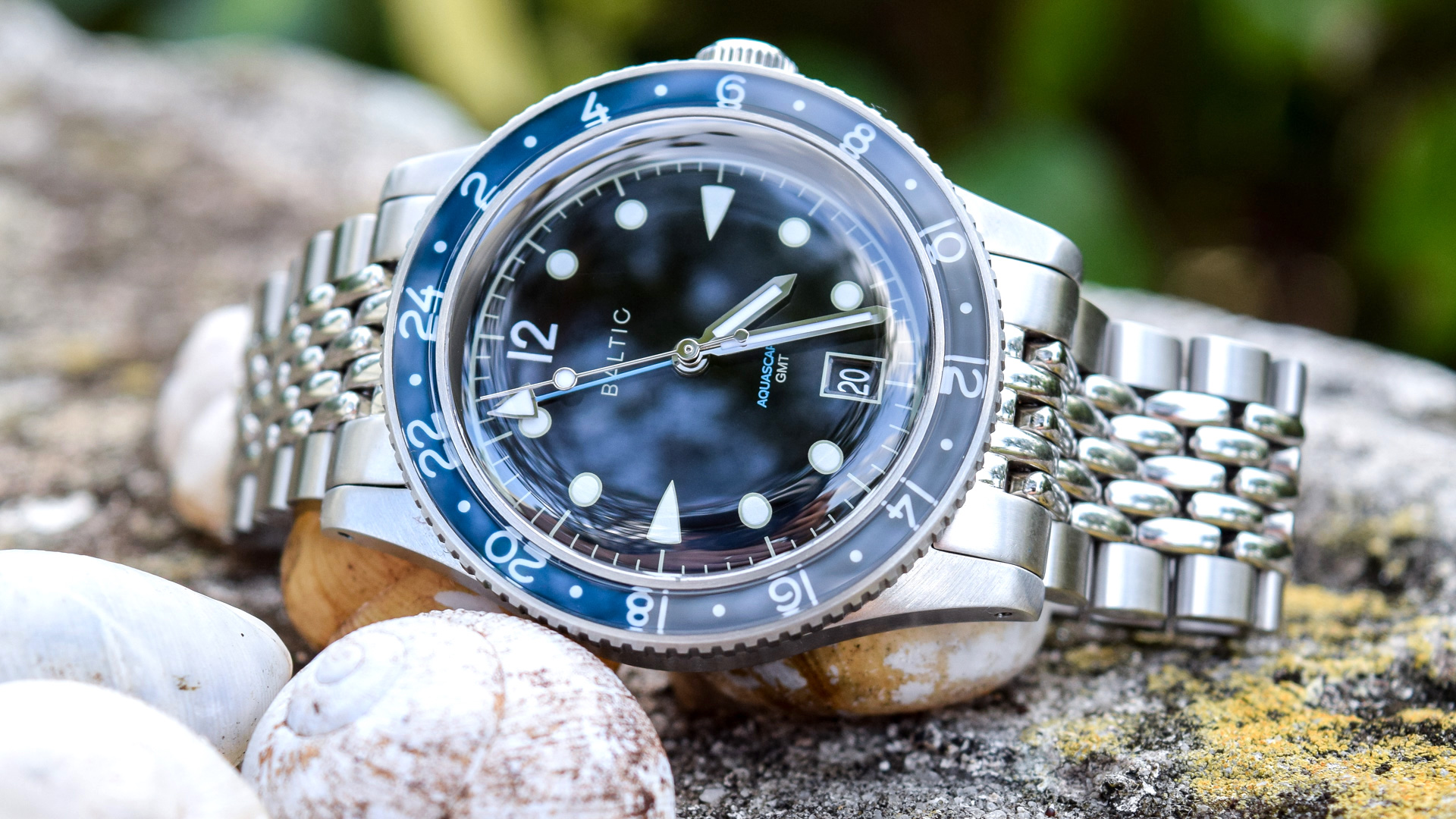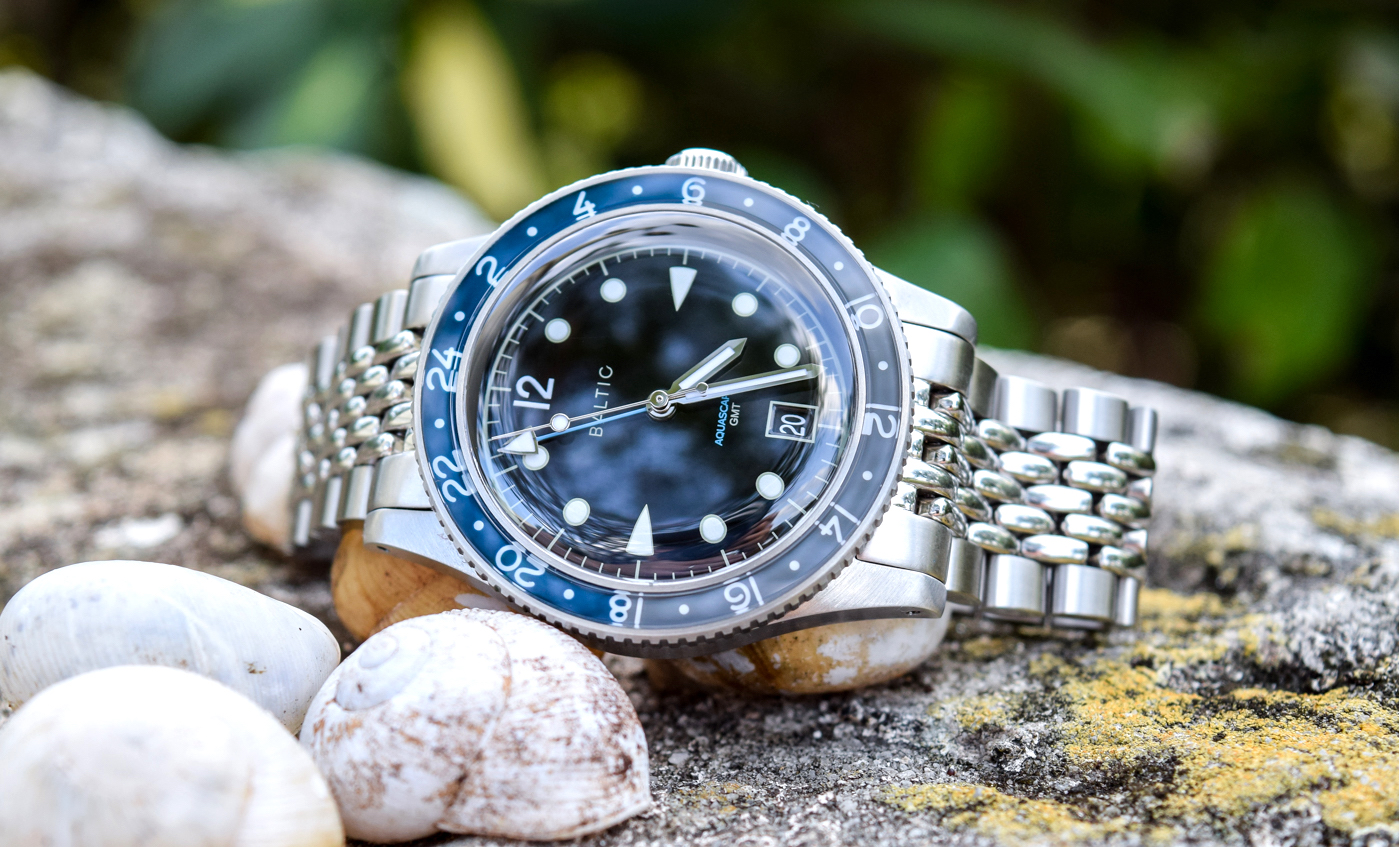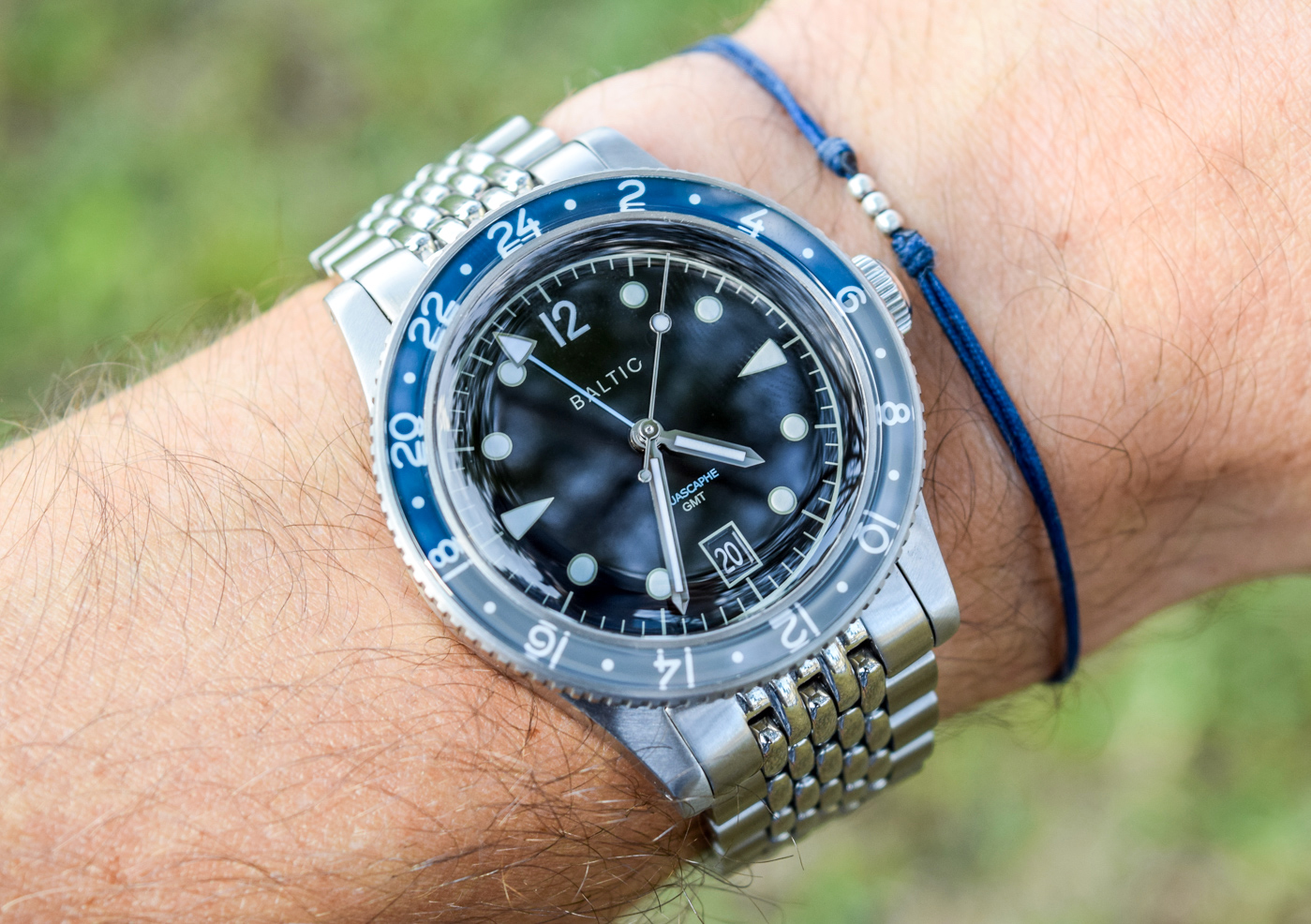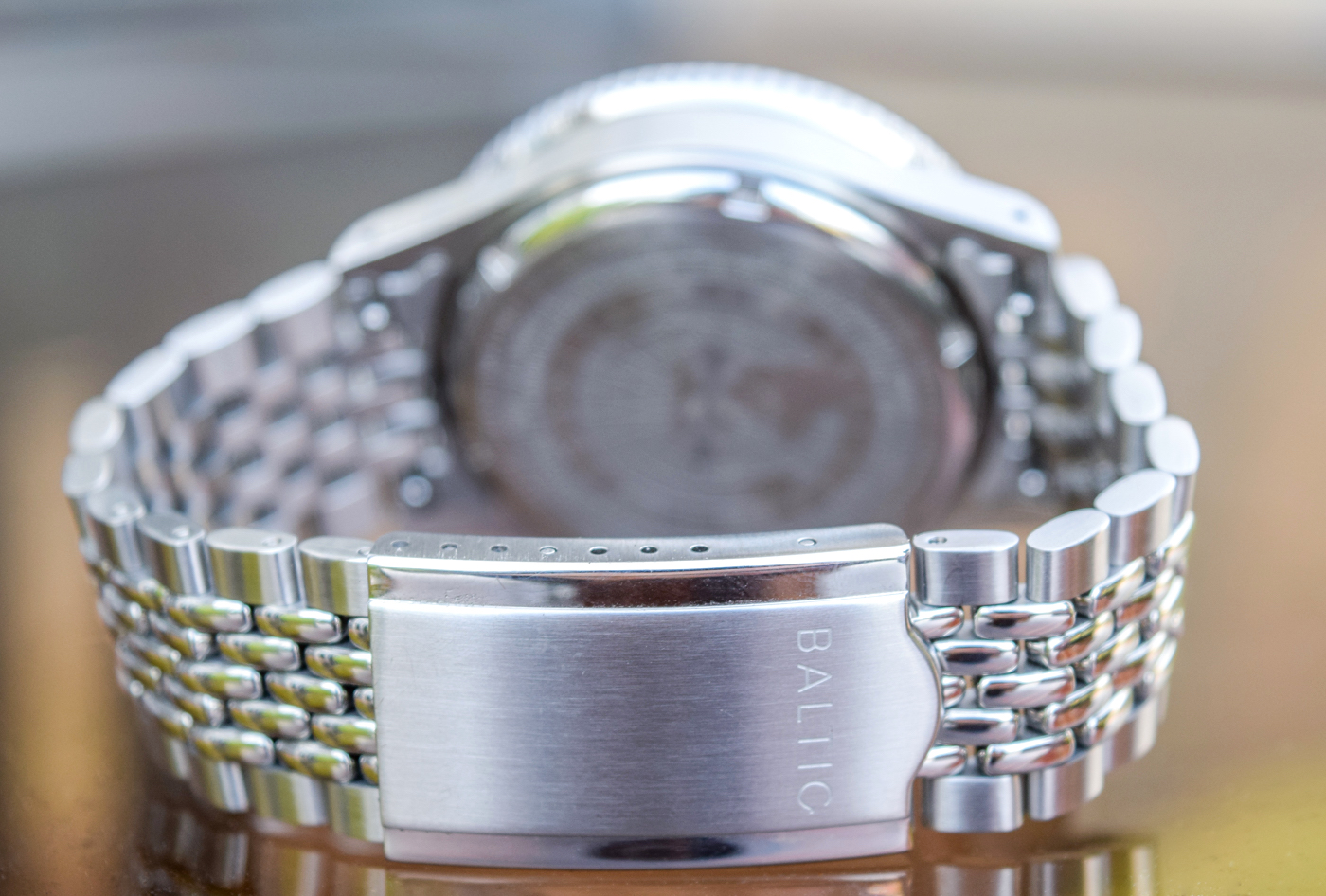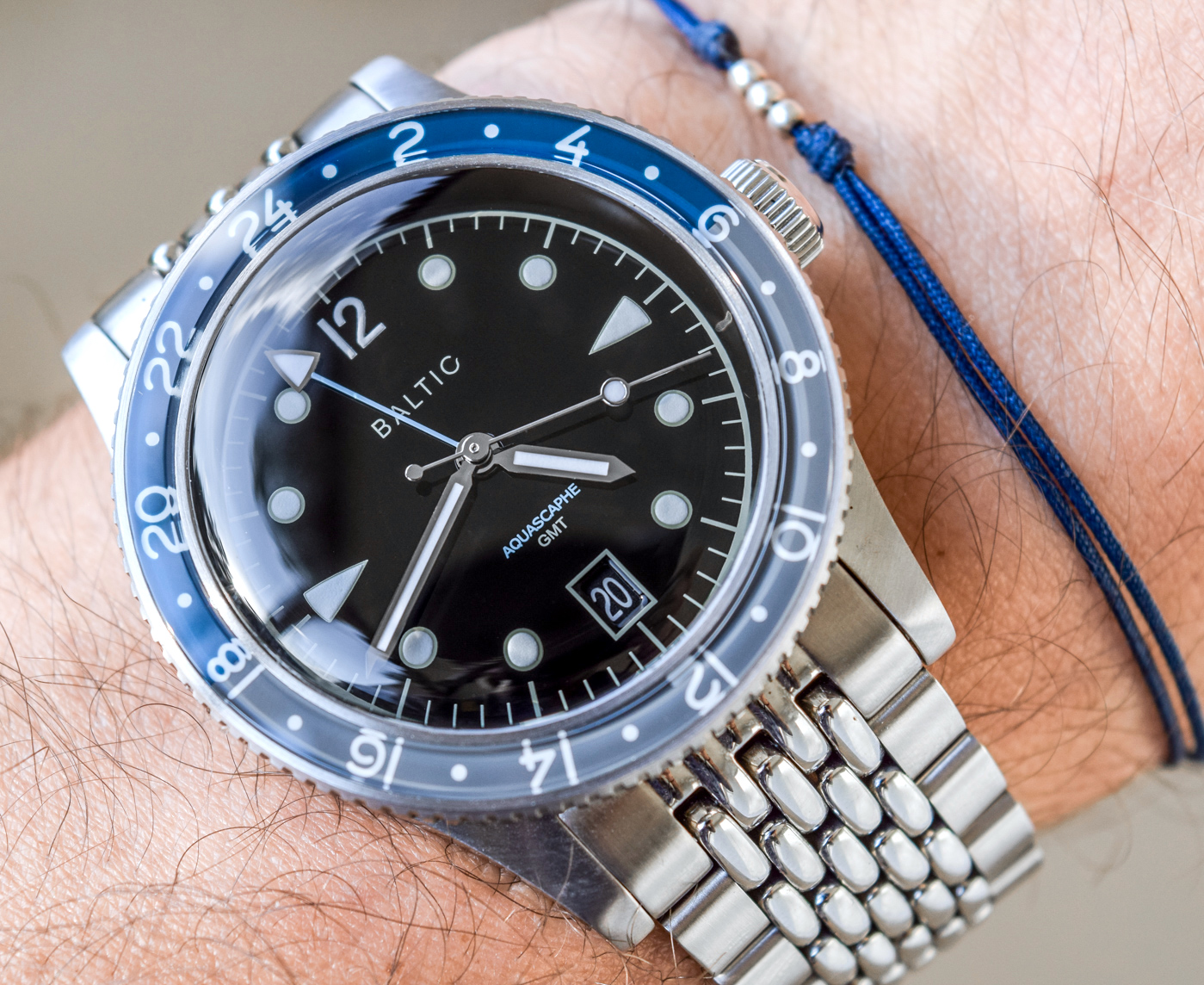
Parisian microband Baltic has, in a relatively short time, created one of the more exciting microbrands in recent memory. Founded by Etienne Malec via Kickstarter in 2017, Baltic’s first watch, the Aquascaphe, was and is a beautifully executed yet inexpensive take on the old Fifty Fathoms diver design, modernized just enough to be its own watch. Watch enthusiasts responded by not only funding well beyond initial Kickstarter goals, but also by snapping up all of Baltic’s subsequent Aquascaphe deliveries in short order. With some money in its pocket, Baltic then set its sights on an equally charming time-only watch, the HMS, as well as an extremely well-priced vintage Bicompax chronograph, before adding a few Aquascape variations to the range.
Up to this point in its history, everything Baltic produced was based on a similar process, with cases and movements from Asia, straps sourced from France, and other accessories and elements from Italy. Baltic is completely transparent about its supply process, which is refreshing. Once all the parts are on hand, Paris-based Baltic’s watches are assembled in France’s historic home of watchmaking, Besançon. Again expanding the successful Aquascaphe range, Baltic has just released its first substantive update to the diver’s model that brought the brand notoriety.
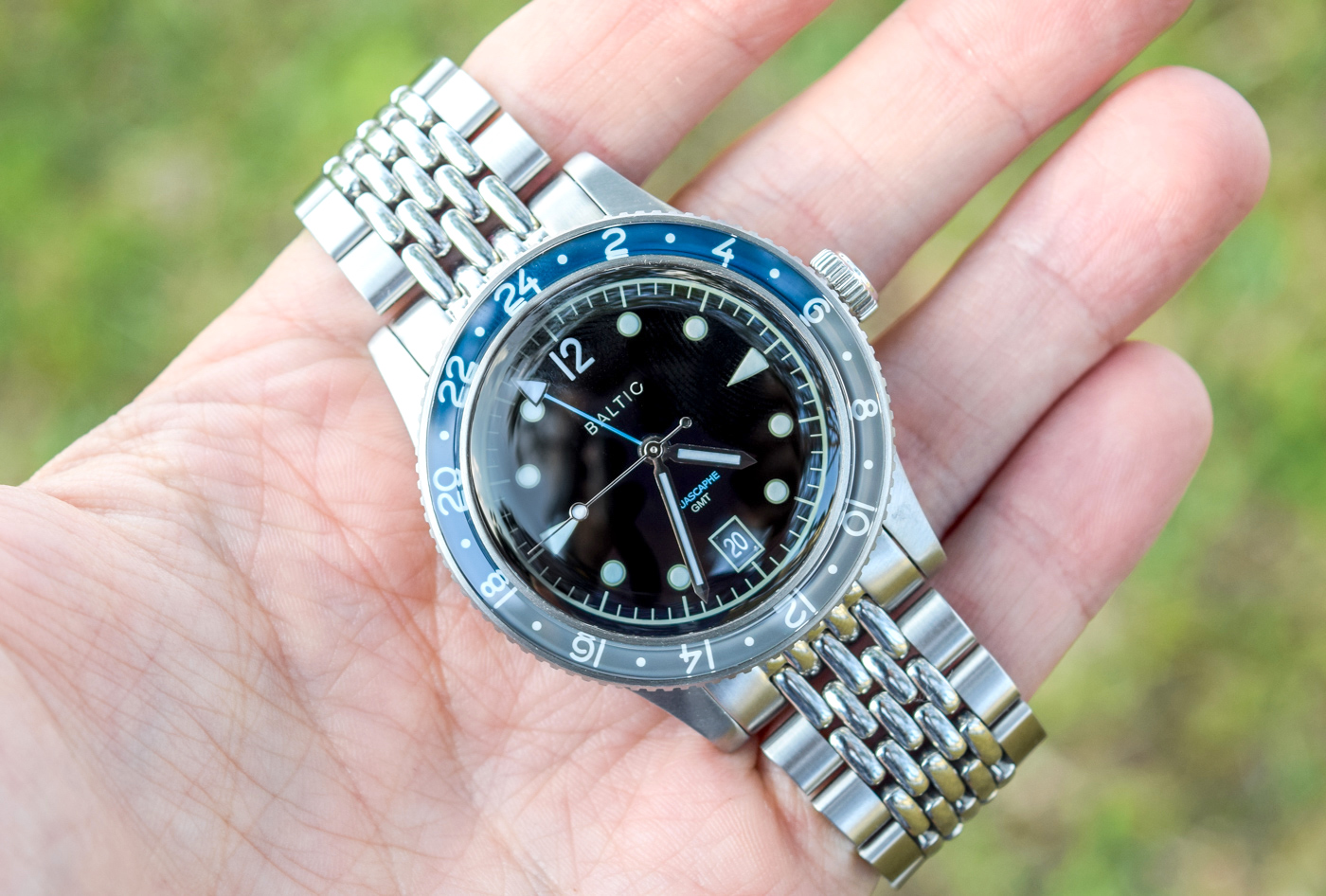
The new Baltic Aquascaphe GMT is, like its older sibling, a 200-meter, automatic, vintage-styled diver’s watch with a domed sapphire crystal and a familiar skin-diver-meets-Fifty-Fathoms case shape. However, where previous updates consisted of different dial colors, bezel inserts, or case materials, the Aquascaphe GMT is, and you might see this coming, equipped with a second time-zone function enabled by the Swiss Soprod C125, as well as a bidirectional sapphire lumed bezel.
The new watch’s jump in movement spec from Miyota to a more complicated Soprod, as well as a change in origin from Hong Kong to Switzerland, naturally has an effect on price, with the new Aquascaphe GMT debuting at 1000 Euros or about $1,200, $500 more than the standard model.
Given my well-documented love of watches and all things underwater, as well as my background as a commercial diver, I find Baltic’s Aquascaphe GMT an intriguing watch, one I was happy to take for a spin in this Wrist Time review. For the traveling diver’s watch enthusiast, a few questions have likely arisen by now: Are these changes worth the substantial upcharge compared to the already established and well-respected Aquascaphe so many know and love? Is the colorful new Aquascaphe GMT worth its price? And, of course, is the new watch more croissant et café or mask and fins?

A Familiar Case Shape
Part of what endeared the original Aquascaphe to the masses was its case shape and size. At a very reasonable 39mm in width and only 47mm lug to lug, the Aquascape GMT is virtually the same as the original, and wears well on all but perhaps the very largest wrists, presenting a vintage profile also aided by an excellent, vintage-style, domed sapphire crystal, which still only brings the piece to a modest 12mm thickness. This compact presentation is demonstrative of what appears to be an industry-wide downsizing trend, of which Tudor’s Black Bay 58 and Seiko’s SPB153 and SPB143 are all excellent examples. As a smaller-wristed guy (6.25” even after a few curls), I’m always happy to see brands playing toward smaller cases and especially shorter lug-to-lug measurements.
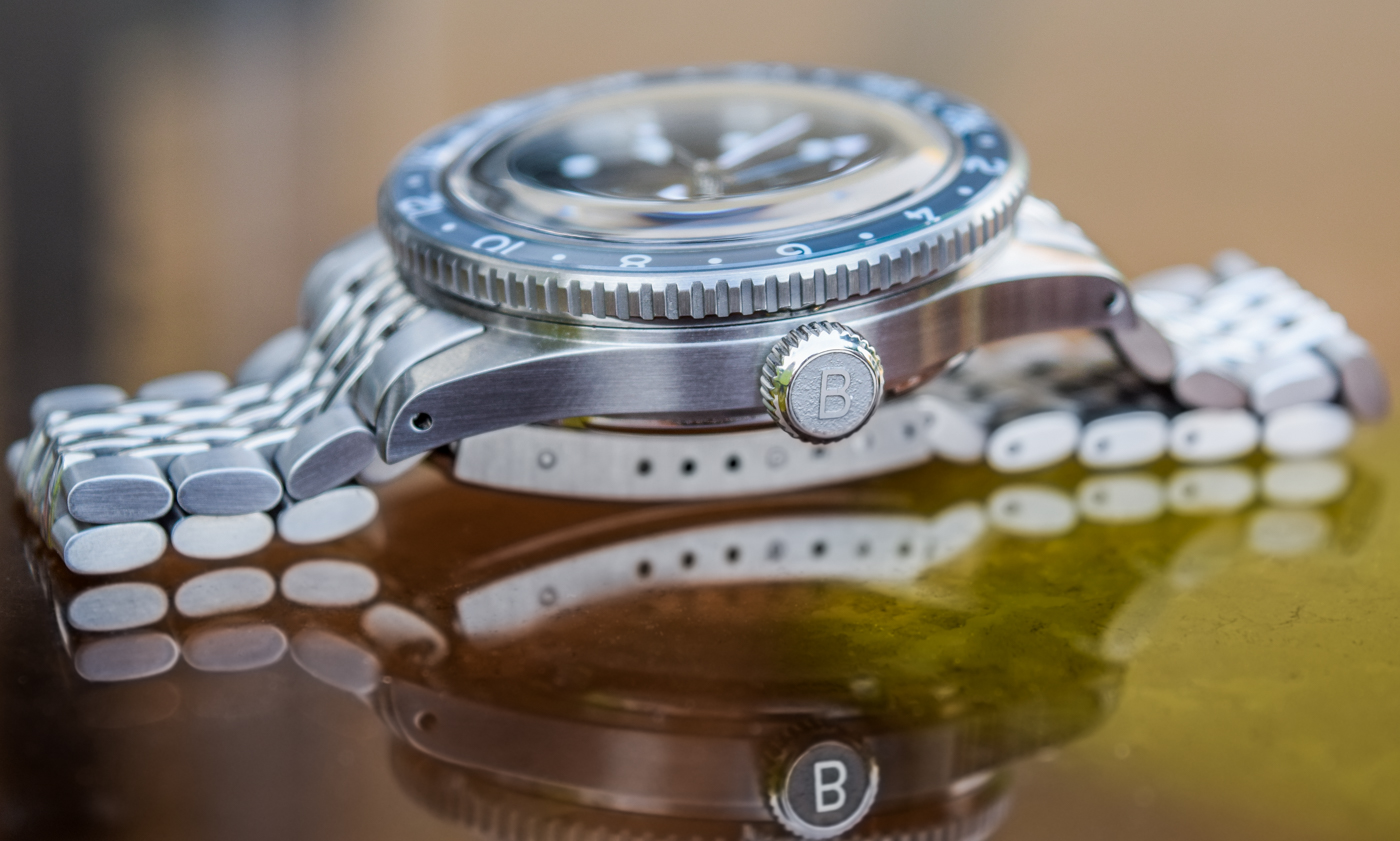
Sizing aside, the finishing on the Aquascaphe GMT case is, again, more or less the same as its forebear, with simple brushing all around and straightforward case architecture with 90-degree angles and no beveling or other embellishments to be found. A signed screw-down crown lives in its usual position, and other than a really cool, GMT-model-specific caseback, the new Aquascaphe case is restrained, utilitarian even. Given the tool-watch approach of the design, the simple finishing is all well and good, though there are certainly more finely finished watches in this price range for those who appreciate such things. Given the upcharge associated with the new movement, it would have been cool to see Baltic throw in a polished bevel or two, but it isn’t a dealbreaker for me and likely won’t be for you, either.

Dial and (Lots of) Hands
When brands start adding complications to established designs, things can get out of hand quickly. It’s easy to do too much. Luckily, Baltic’s integration of a new jumping GMT hour hand hasn’t upset the watch’s balance. This is still very much an Aquascaphe dial, with a 12 o’clock numeral paired with otherwise circular or triangular indices, each filled with Super-LumiNova. Simple polished stick hands allow the new, brightly colored GMT hand with a polished triangle at its point to really shine. Dial text is pleasantly minimal, with “Baltic” printed in gray on my blue and gray variant, as well as “Aquascape” printed in blue at 6 o’clock and “GMT” printed in white just below.
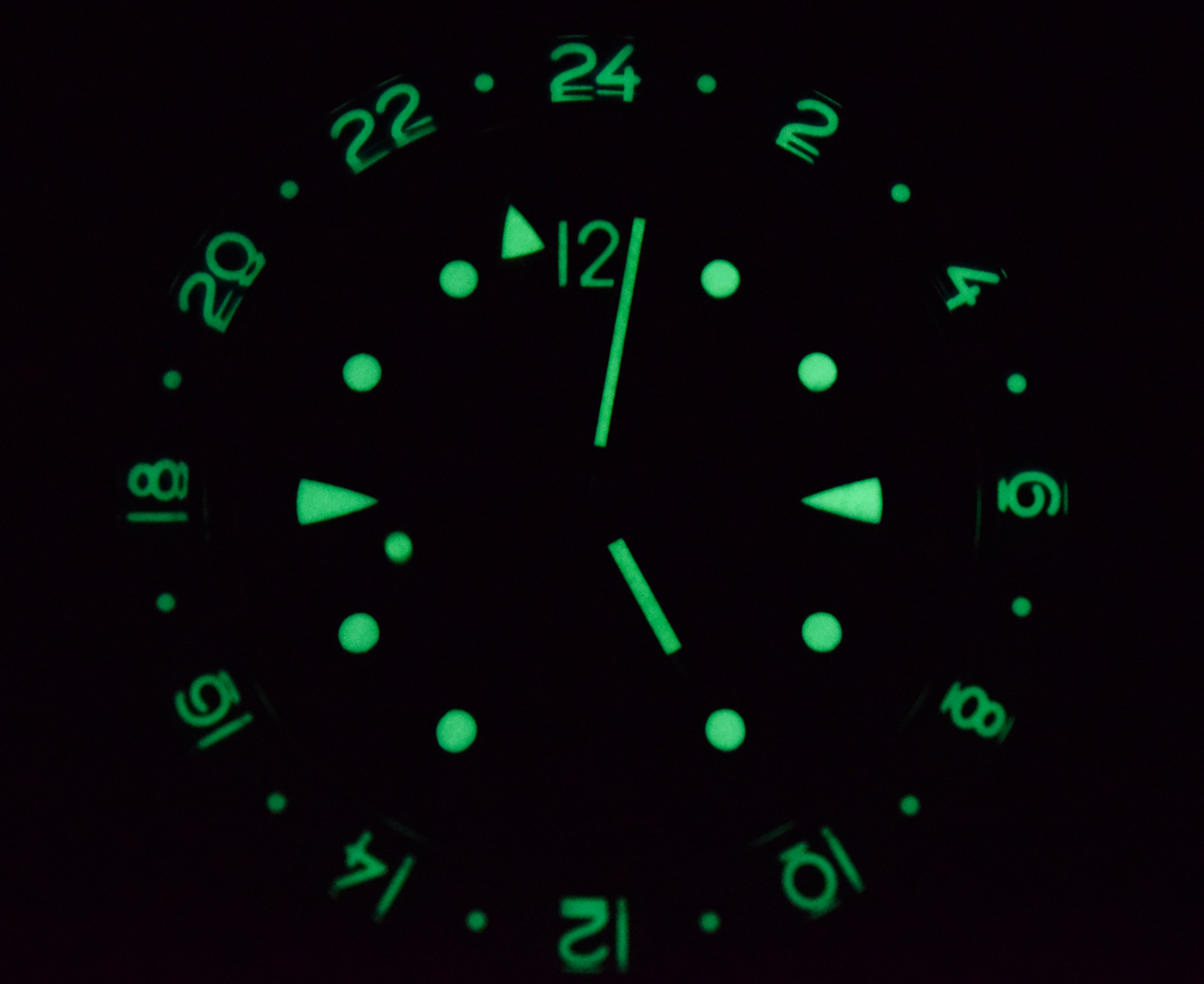
However, different from the original Aquascaphe, the GMT’s dial is printed, as opposed to a sandwich-style construction on the standard watch. Another novel feature here is the inclusion of a date window, placed symmetrically in the six o’clock position, a look I think really works without making the dial too busy. Thinking back, this is actually the brand’s first watch with a date function, a complication that makes a lot of sense given the travel orientation inherent in a GMT watch design. For lume aficionados, C1 Super-LumiNova is evenly applied on the hour markers and all of the hands, as well as the sapphire bezel. While the lume is adequate, and glows visibly through the night, it isn’t terribly bright compared to some competitors, and may leave some lume-thirsty enthusiasts wanting, especially if you’re coming straight over from a Seiko diver, for example.

From Miyota to Soprod
Of course, the star of the show here, and indeed the primary reason for the substantial upcharge, is the inclusion of a Swiss-made GMT caliber in the form of the Soprod C125 powering the Aquascape GMT. For those who aren’t familiar, Soprod is part of the Festina Group and one of a few movement manufacturers (also including Sellita) that is providing brands an alternative to the previously near-ubiquitous ETA, a subsidiary of the world-dominating Swatch Group.
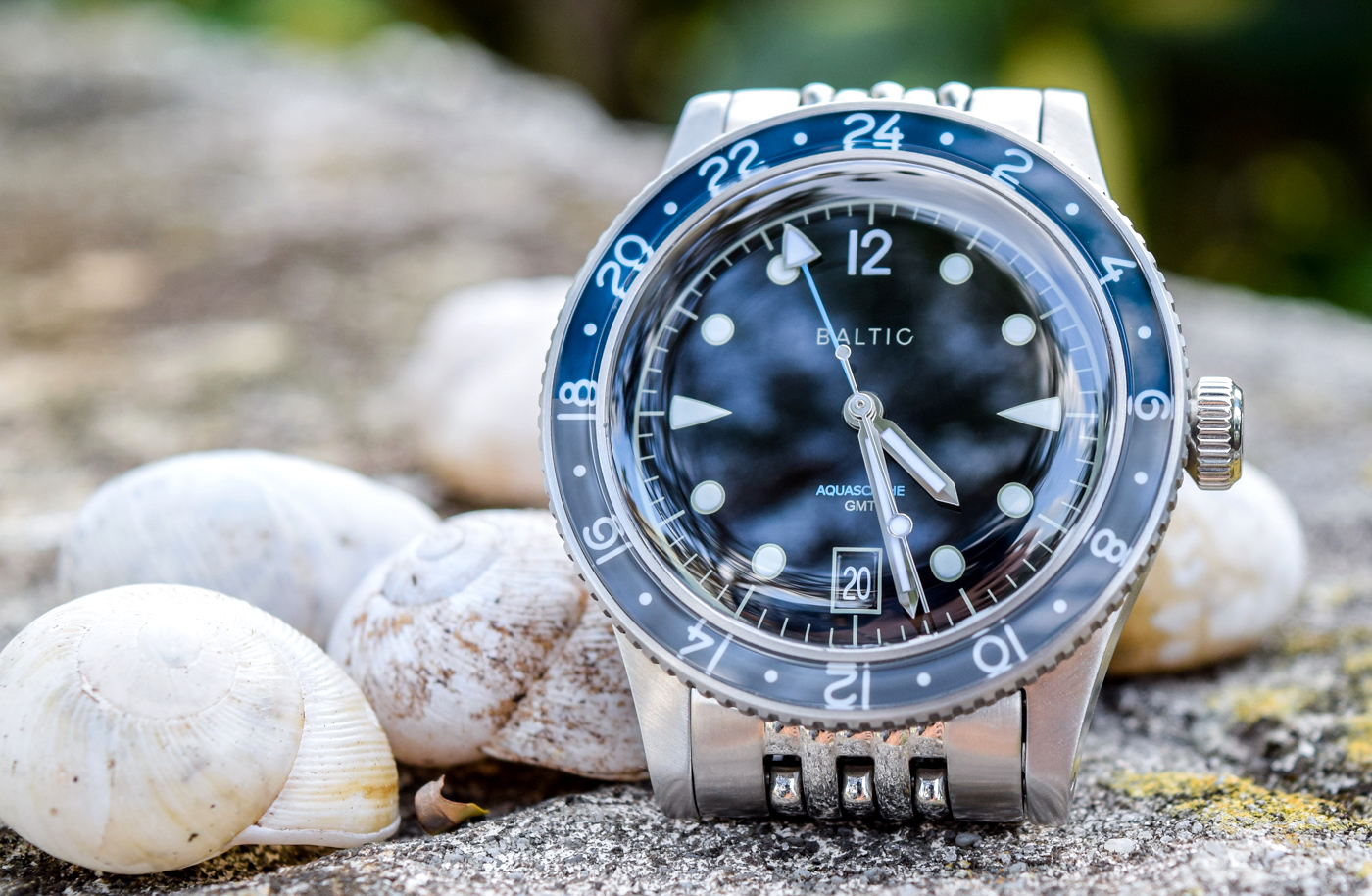
The C125 is a 25-jewel automatic with 42 hours of power reserve and a familiar 28,800 rate. Similar to the relationship between the ETA 2892 and 2893, the C125 consists of a base movement (the M100 in this case) with an added module for the GMT function. Therefore, like the ETA 2893, the C125 with its quickset GMT hand is not a “true” GMT movement, which would have a quickset local hour hand. If this difference matters to you at this price point, it shouldn’t, as I don’t know of a “true” GMT caliber for anywhere near the Aquascaphe GMT’s price. Someone correct me sarcastically in the comments if I’m wrong.
For me, the C125 has run beautifully, keeping accurate time both at home in Miami and six hours ahead in France, where I lived for a couple of months and still keep in touch with a few friends. I also work with an international team and enjoy being able to set the watch’s second time zone to ease collaboration with colleagues abroad. Of course, this watch is imagined as a travel piece, and I’m confident it would do well in that regard should the world ever return to any form of normalcy. I have my fingers crossed.

Rigging Points
From the outset, Baltic has done a fine job in the strap and bracelet department, offering an excellent signed beads-of-rice bracelet that fits all of the brand’s watches, something really convenient if you begin to collect them, as many do. The bracelet is all solid links, with polished beads and brushed outer links, tapers from 20mm to 18mm, and it has a signed, vintage-feeling clasp. It’s really well-executed and looks great on this watch and others from the brand.
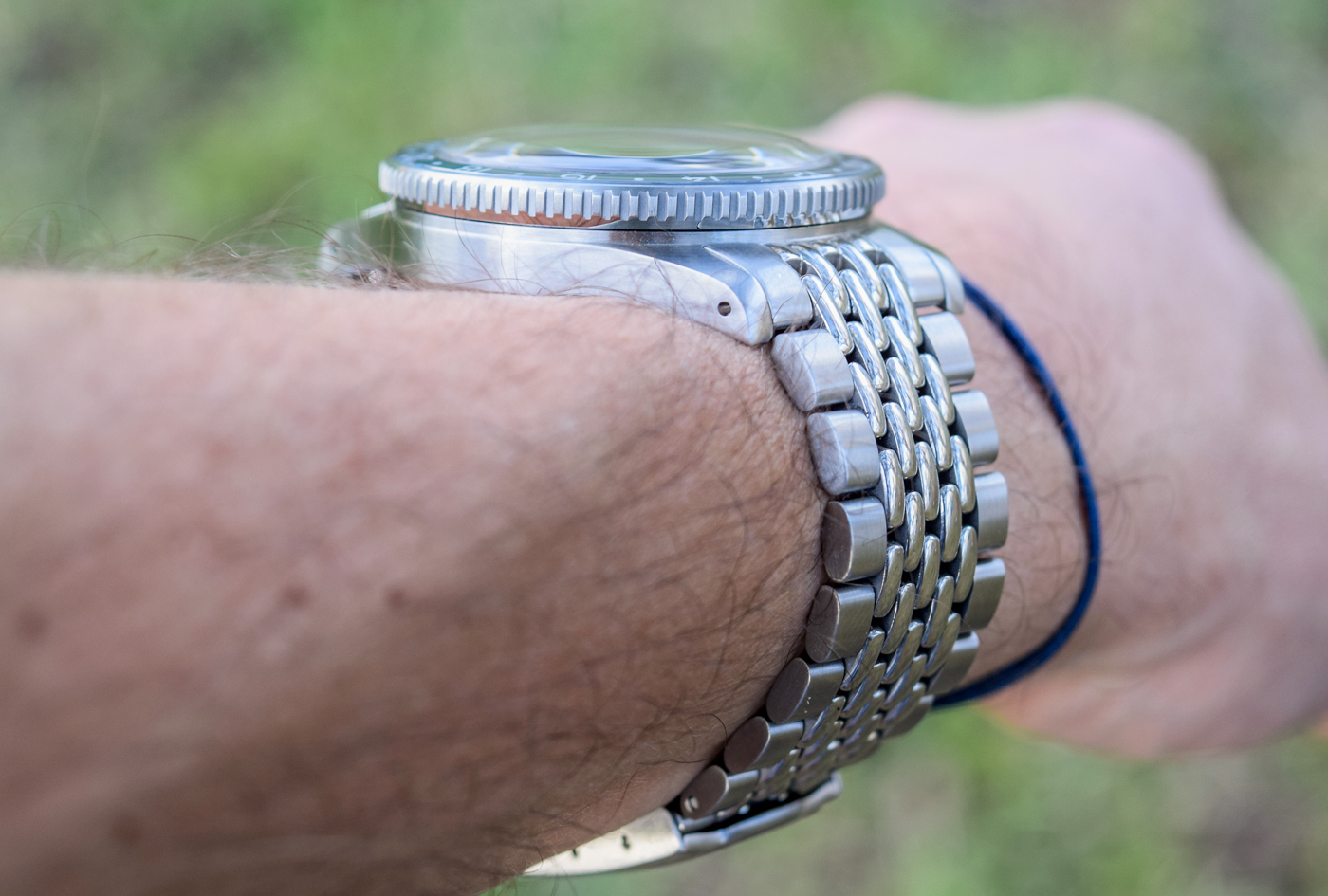
If the bracelet isn’t your thing, the Aquascaphe GMT is also available on a natural rubber tropic-style strap, again with a signed buckle. This particular rubber strap is near perfect, tapers from 20mm to 16mm, and is comfortable on the wrist while instantly granting the watch a more casual, aquatic feel. For the price, this strap and bracelet are both great options, though the 20mm lug-width means the Aquascaphe can be worn on pretty much anything you have laying around. It does well on a gray Nato, for example.

Viewed Together
In all, the Baltic Aquascaphe is a significant update to the original model, with some legitimate utility built in. Given Baltic’s success with this family of watches, I’d wager that we’ll see more variations in due time. For me, there’s no denying the clean, attractive design of this watch, which shares a lot of DNA with the Zodiac Aerospace but not in a way that feels like it was copied but rather designed according to similar principles at a similar time. Like the original Baltic Aquascaphe, this watch feels unique, balancing just enough modernity with tastefully crafted vintage design elements in a rugged-enough build for tool watch use, though this piece strikes me as a bit more refined. Frankly, I wish more brands would work with this concept. Many divers (in non-pandemic times) travel to exotic locales to dive, and so the GMT function makes a lot of sense, while not really taking away from a dive watch’s utility.

For the ocean-going traveler, the new Aquascaphe GMT is one of the most attractive options out there for a GMT diver, and it feels worth the somewhat higher price compared to the standard model. For a microbrand that keeps creating desirable watches for an ever-growing fanbase, this piece is yet another step in the right direction. The Baltic Aquascaphe GMT is available either on a rubber strap for $1,100 USD or a stainless steel bracelet for $1,200 USD, depending on exchange rates. For more information, visit www.baltic-watches.com.
Necessary Data
>Brand: Baltic
>Model: Aquascaphe GMT
>Price: $1,100 on rubber strap or $1,200 on beads-of-rice style bracelet.
>Size: 39mm-wide, 12mm-thick, and 47mm lug-to-lug distance.
>When reviewer would personally wear it: As a warm-weather travel watch with enough water resistance for aquatic activities.
>Friend we’d recommend it to first: The fan of classic dive watch design who travels internationally.
>Best characteristic of watch: The combination of a Swiss GMT caliber and Baltic’s now-signature aesthetics.
>Worst characteristic of watch: The clasp on the beads-of-rice bracelet leaves a bit to be desired.

